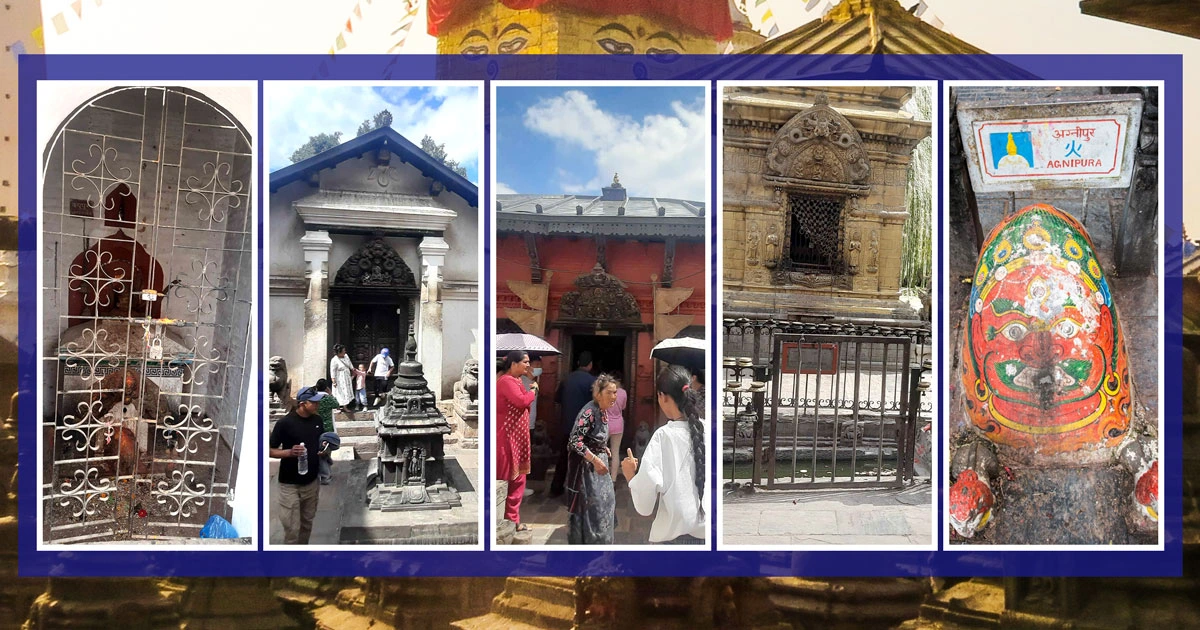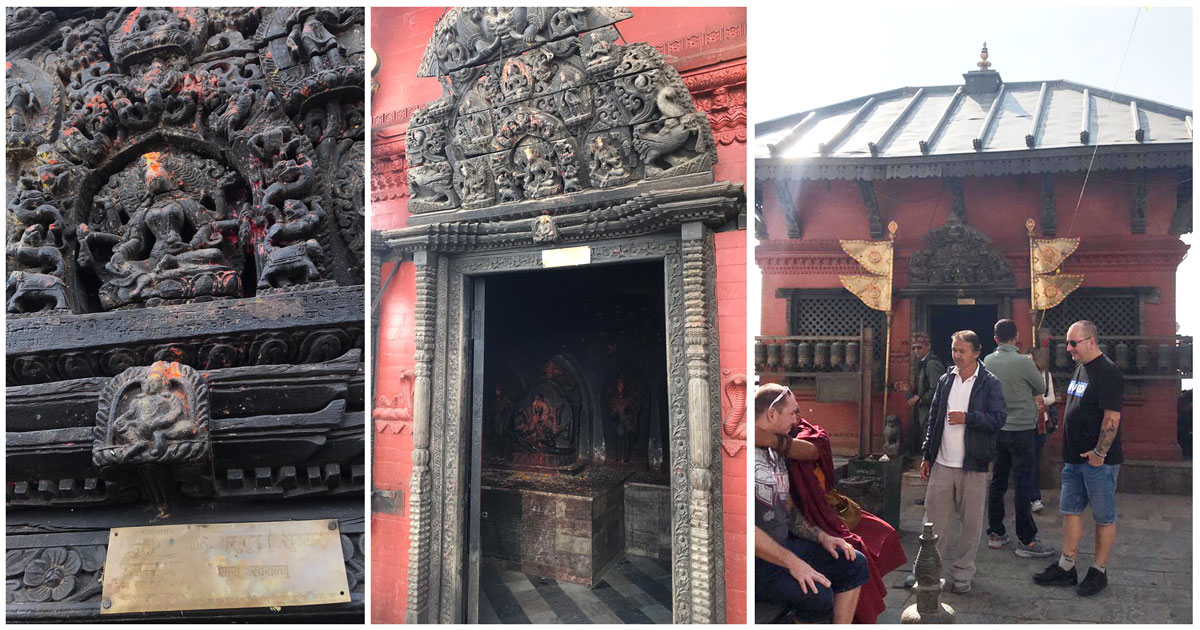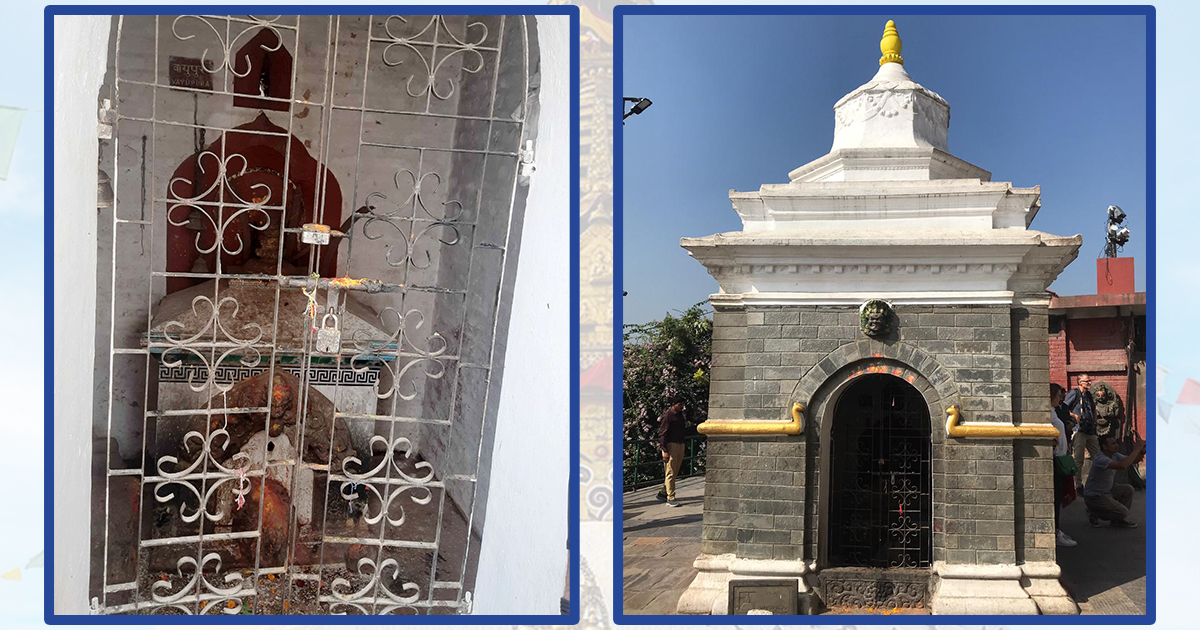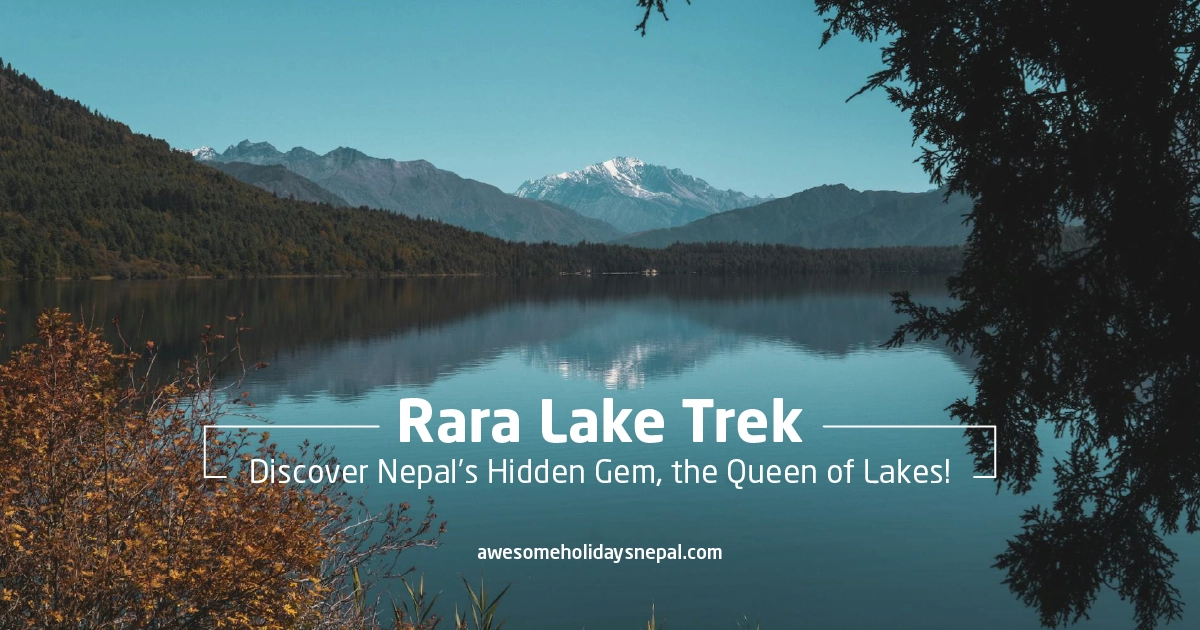Panchapur of Swayambhunath: The 5 Basic Elements of Universe

Swayambhunath, one of the UNESCO World Heritage, and an infamous tourist destination, isn’t just about being a hilltop heritage of Buddhists. Manifested from a lotus seed planted by Vipashvi Buddha, the stupa and its premises behold many other structures, each with a unique traditional importance and essence.
The Panchapur of Swayambhunath is one such structure that encircles the main stupa, representing the five basic elements of the universe. To be clear, these are five shrines that you will see around the dome-shaped stupa of Swayambhunath in five different directions.
Let’s go through the article to learn about the origin and essence of the Panchapur of Swayambhunath.
How did the Panchapur originate in Swayambhunath?
The story behind the five shrines encircling the Swayambhunath stupa dates back to the creation of the Kathmandu Valley. On observing the divine light, Maha Manjushri came from the northern kingdom of China and drained the lake from the George of Chobhar. Soon after, he made a city and established the settlement of Manjupattan.
Later, King Gunakar of Mithila came to Kathmandu to worship Swayambhu’s divine light. After becoming a disciple of Maha-Manjushree, he stayed to deepen his practice.

Similarly, King Prachanda Dev from Bengal came to pay his respects to the divine light of Swayambhunath. He was so devoted that he transformed himself into a monk. He then made a chaitya above the divine light to protect it from evil power. This chaitya was renovated multiple times and took the present form of Swayambhu chaitya. The word Swayambhunath signifies that it was a self-evolved structure.
The monk continued to stay in the cave on the northern side of the chaitya, calling himself Shantashri Bishnu. Later, he became popular as Shantikar Acharya. To protect the divine light from the forces of nature, i.e., earth, air, fire, water, and sky, he established other sanctuaries, such as Vasupur, Vayupur, Agnipur, and Nagpur.
Continuing his religious voyage, he meditated for eternity inside the Shantipur cave. This cave is considered the first Mahabihar in Nepal and was established by Shantikar Acharya. Here, he practiced tantra along with Buddhism and gave rise to a new clan of Buddhism, popularly known as Vajrayana Buddhism. Every Vajrayana bar in Kathmandu is related to this Shantipur.
Panchapur of Swayambhunath
Knowing about each purs of Panchapur is vital to understanding the existence of Swayambhu. Following are the Panchapur of Swayambhubath, i.e., the five shrines, and more details on what they represent.
1. Shantipur – शान्तिपुर and its Tantric Relevance
Northwest of the main Swayambhu stupa lies the shrine of Shantipur. It is also known as Akashpur (Sky Place), representing the fifth element- the sky. This temple, significant for tantric practices, houses certain secret documents, rituals, and methods of worship of tantric deities.
The Shantipur is related to the sky element, filled with ether, and is associated with the white color. It stands for purity, emancipation, and the vast emptiness within our minds. In Buddhism, white is the color of learning and knowledge.

It has many secret books written with tantric mantras. Hence, only those blessed with tantric skills under Vajrayana Buddhism are allowed to enter the temple. The inner walls on the first floor of the temple have been painted with stories of Kathmandu Valley since the Medieval Malla period. The temple was believed to have been constructed between the 8th and 12th centuries. The current state of the site is the result of reconstruction after the 2015 earthquake.
It is believed that Shantikar Acharya is still meditating on the cave’s ground floor. The cave has three layers. Shantikar Acharya propounded the Vajrayana Buddhism practiced inside this cave.
There is a tantric book written with the blood of serpents. A legend says that whenever there is a drought in the Kathmandu valley, the head of the kingdom must bring the book outside and face the sun to invite rain.
During the regime of King Pratap Malla, there was a drought in the valley. But he had not consecrated Tantra diksha. He built two Shikhar-style structures on the periphery. They are called Pratappur and Anantapur, and they stayed there and learned the tantra. He then entered the three mystic doors of Shantipur, brought the divine book, and faced it towards the sky, where there was rain in the Kathmandu valley.
2. Agnipur अग्निपुर: A Symbol of Wisdom and Energy
Lying northwest of Swayambhu stupa, Agnipur is a shrine painted with the red face of Agni Bhairava, the god of fire. The fire element is represented by the red color.

The red color transforms the delusion of attachment into the wisdom of discernment. It symbolizes purification, energy, and transformation, and is associated with worshiping deities related to fire and energy. Red also represents the achievement, wisdom, virtue, fortune, and dignity of mankind. Two small lions protect this shrine in front of it.
Monk Shantikar Acharya sanctified this shrine to protect the Swayambhu from fire.
3. Basupur वाशुपुर: Connecting to the Earth
The temple of Bashundhara is also called Basupur. Goddess Vasundhara is referred to as the Goddess of Wealth and Prosperity in Buddhism. Goddess Vasundhara represents the earth element. Vasundhara dwells on a vase in the playful posture known as Lalit asana.
Basupur is located in the southeastern corner of the UNESCO World Heritage site. Yellow represents the earth element. Yellow transforms our pride into wisdom about our connection with Mother Earth and our existence because of the Earth, which provides us with the foundation of our lives.

It is said that Basupur connects worshippers with the grounding energy of the earth, reminding us of our roots and our reliance on the soil that sustains us. The yellow color also signifies the Middle Path of life, which is in the state of emptiness.
4. Nagpur नागपुर: Symbol of Love and Kindness
On the northern side of the Swayambhunath stupa, in front of the Amoghasiddhi Buddha, is a rectangular pit with an idol of Naag, the serpent king. It was built to appease the snake spirits in the Kathmandu Valley. It is believed that this led to the underworld kingdom of Nagas. Hence, it is also known as Patalpur.
The Nagpur is a tribute to all the nagas (serpents) that protect water sources from harmful organisms. Blue means space. It is believed that anger can be transformed into wisdom when meditating on this color. Blue also signifies the concept of loving kindness and peace in Buddhism. The Patalpur highlights the importance of water in daily life and spiritual practice.
5. Vayupur वायुपुर : The Unseen Element
It is located near the southwest entry of the Swayambhunath stupa and represents the air element, symbolizing movement, freedom, and the breath of life, the air.

Green represents the air element, which symbolizes transforming jealousy into the wisdom of accomplishment. Vayupur is a tribute to the unseen element, what is felt but not seen.
The Importance of Visiting Panchapur of Swayambhunath
The sole purpose of these five puras, each shrine emanating five different forms of energy, is to protect the stupa from any possible disaster. Combined, the air, water, earth, fire, and sky have been doing their tasks and restoring the faith of Buddhists for centuries.
With a perfect amalgamation, these shrines are believed to guide one’s way to peace and spiritual awakening.
If you want to learn more about the stories of these shrines and associations, make sure to stop by and read the inscriptions the next time you visit. You will truly be amazed!
FAQs
Expand AllWhen was the Swayambhu stupa built?
The Swayambhu was made in 460 BC by King Manadeva.
What is Swayambhu famous for?
Swayambhu is one of the oldest temples in the Kathmandu valley. In 1979 AD, it was listed as a UNESCO World Heritage site.
What is another name for the Swayambhu temple?
Another name for Swayambhu is Monkey Temple.
Why is the Swayambhu stupa called Monkey Temple?
The jungle in the Swayambhu hill consists of thousands of trees, a home for monkeys. When foreigners visited the hill, it was easy for them to call it the temple of monkeys instead of saying Swayambhu, giving it the name Monkey Temple.
Where is Swayambhu located?
It is located at the top of a hill in Kathmandu.
What is the meaning of the eyes in the Swayambhu stupa?
The two eyes in the hermica of the Swayambhu stupa represent knowledge and compassion. Also, there is a third eye between the two eyes. This third eye is also known as the Wisdom Eyes or tesro netra (third eye) in Nepali. This third eye symbolises the peace and the unity of all things existing in the universe.
Is it free to visit the Swayambhu Nath Stupa?
It takes a ticket of Rs 200 for foreigners and Rs 50 for SAARC citizens.
What are the major tourist attractions in Swayambhu Nath Stupa?
The major attractions of Swayambhu are:
- The Magnificent Swayambhu Stupa
- The large metallic Vajra (Lightning Bolt)
- Temple of Harati Ajima
- Shantipur
- Vayupur
- Agnipur
- Naagpur
- Basundhara Temple
- Pratapur and Anantapur
- Shree Karma Raj Mahavihar
- World Peace Pond
Related blog posts
Discover a choice of tourist destinations loved by most of our visitors. Whether you're on a jungle safari to spot rare animals or walking through a world heritage site, these well-planned itineraries cover the major highlights of Nepal.




